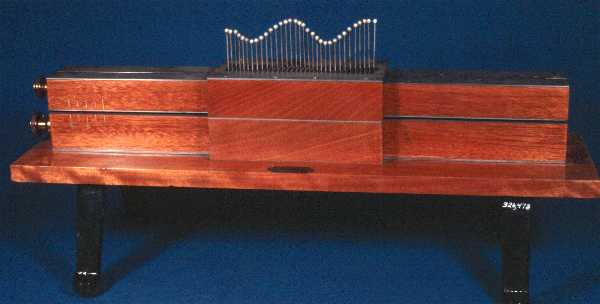The apparatus at the right, in regular use at Kenyon College, was made by E. S. Ritchie of Boston. The 1860 Ritchie catalogue has the following description: “Dr. Young's Instrument for showing Interference of Water Waves, as improved by Prof. Snell [of Amherst College]. Fifty ebony keys, arranged in a series, and kept in place by a bar in front, constitute the upper system of waves, the lower system is simply a dark board, which can be elevated by a lever at the back of the frame: when this is raised, all the ebony keys rest on its edge, so that their tops give the resulting form of both systems combined. If the lower system s similar to the upper one, the resultant is a system of double the height, or else becomes a straight line; there are four boards with different systems; the frame of mahogany, thirty inches long................$17.50”
